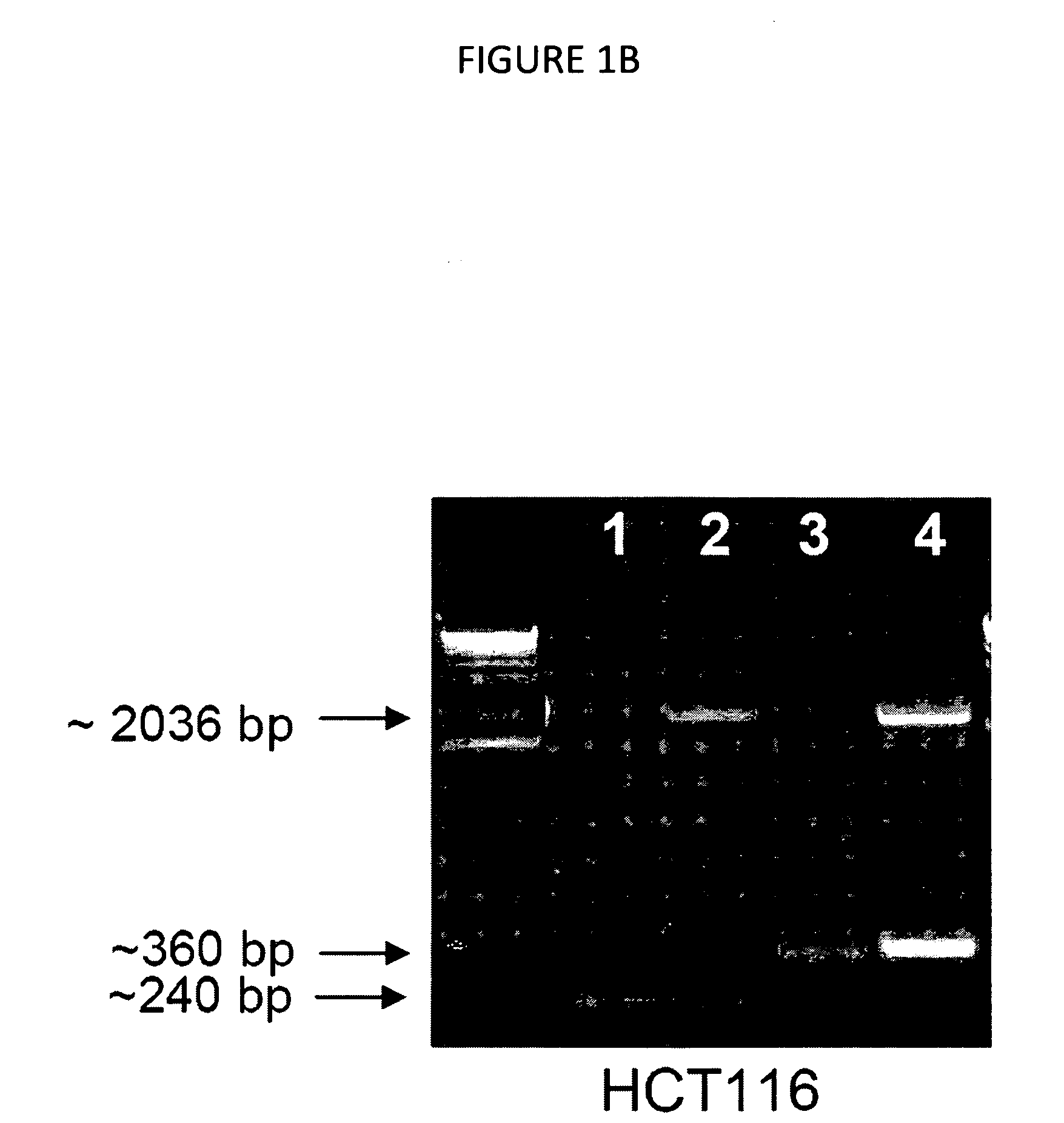Methods and Systems for Detecting Antiangiogenesis
a tumor and angiogenesis technology, applied in the field of tumor vessel response detection to antiangiogenic therapies, can solve the problems of insufficient tumor vessel size, no reliable predictor, and starving tumor cells of oxygen and nutrients, and achieve the effect of inhibiting or decreasing angiogenic tumors in patients
- Summary
- Abstract
- Description
- Claims
- Application Information
AI Technical Summary
Benefits of technology
Problems solved by technology
Method used
Image
Examples
example 1
In Vivo Tumorigenesis and Assays
[0061]Parental and VEGF− / − cells were grown in complete media and harvested for in vivo studies as previously described (Dang et al., 2001; Dang et al., 2004). Six-week old female athymic nu / nu mice (Charles River Labs, Wilmington, Mass.) were implanted subcutaneously into the flanks with approximately 7.5×106 cells, as previously described (Dang et al., 2006, Cancer Res. 66:1684-936). Tumor sizes in two dimensions were measured with calipers, and volumes were calculated with the formula (L×W2)×0.5, where L is length and W is width. Student's paired t-test was used to determine statistical significance between groups. Mice were housed in barrier environments, with food and water provided ad libitum. Xenografts were harvested for subsequent analyses when they reached approximately 0.4 cm3.
[0062]Harvested xenografts were fixed in Tissue-Tek OTC compound (Sakura Finetek, Torrance, Calif.) and stored at −80° C. Frozen sections, 10 microns in thickness, we...
example 2
Disruption of the Human VEGF and HIF-1α Gene
[0064]The endogenous locus, adeno-associated virus (AAV) knockout construct, and resulting targeted locus are shown in FIG. 1A. The strategy is as previously described (Chan et al., 2002, Proc. Natl. Acad. Sci. 99:8265-70; Cummins et al., 2004, Cancer Res. 64:3006-8; Kohli et al., 2003, Nucl. Acids Res. 32:3-10). Exon 2 of VEGF was targeted for disruption with an AAV cassette containing the Neo resistance gene under the constitutive control of a SV40 promoter flanked by left and right homology arms approximately 1 kb in length. Cells exhibiting neomycin resistance were screened with locus-specific PCR to confirm homologous integration of the targeting vector. Once the first allele was successfully targeted, the Neo resistance gene was excised using Cre recombinase. The same targeting vector was used to target the second allele. For locus-specific PCR, genomic DNA was amplified using primers specific for exon 2. Loss of VEGF was confirmed b...
example 3
Tumor Assessments
[0065]To access tumor vessel perfusion, mice bearing parental or VEGF− / − xenografts were intravenously injected with Hoescht 33342 (40 mg / kg), two minutes prior to sacrifice. Tumors were fixed in Tissue-Tek OTC compound (Sakura Finetek, Torrance, Calif.) and stored at −80° C. Frozen sections 10 microns in thickness were prepared with a Leica Microsystems cryostat and then examined under fluorescence microscopy.
[0066]To examine intratumor hypoxia, mice were administered the hypoxia marker pimonidazole, 60 mg / kg intraperitoneally 2 hours before sacrifice. Pimonidazole binds to the thiol-containing proteins specifically in hypoxic cells (Rofstad et al., 1999, Int. J. Radiat. Biol. 75:1377-93). Intraperitoneal injection of pimonidazole results in its uptake by hypoxic tumor cells; and bound pimonidazole can be detected in xenografts using antibody to pimonidazole.
[0067]For performing immunohistochemistry on xenograft tissues, harvested xenografts were fixed in formalin,...
PUM
| Property | Measurement | Unit |
|---|---|---|
| Composition | aaaaa | aaaaa |
Abstract
Description
Claims
Application Information
 Login to View More
Login to View More - R&D
- Intellectual Property
- Life Sciences
- Materials
- Tech Scout
- Unparalleled Data Quality
- Higher Quality Content
- 60% Fewer Hallucinations
Browse by: Latest US Patents, China's latest patents, Technical Efficacy Thesaurus, Application Domain, Technology Topic, Popular Technical Reports.
© 2025 PatSnap. All rights reserved.Legal|Privacy policy|Modern Slavery Act Transparency Statement|Sitemap|About US| Contact US: help@patsnap.com



